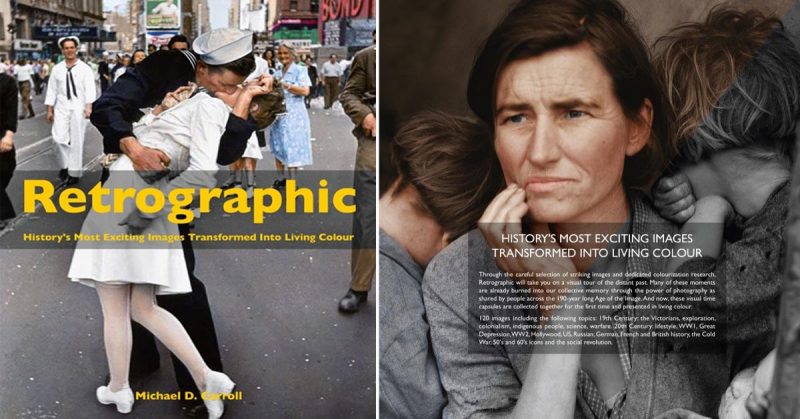ICONIC images have been presented for the first time in a new book showing these famous photographs in living color.
Striking pictures include the VJ Day kiss in Times Square as the end of World War Two was celebrated, the raising of the American flag on Iwo Jima and Marilyn Monroe in her most famous pose as a gust of wind blows her dress.
Other stunning shots in the book show the anti-war image of “Napalm Girl” Phan Thi Kim Phuc, the moment humanity mastered the air through the Wright brothers’ first flight and the Beatles meeting Mohammed Ali.
Many of these moments are already burned into our collective memory through the power of photography as shared by people across the 190-year long Age of the Image. And now, these visual time capsules are collected together for the first time and presented in living color.
The original photographs have been painstakingly colourized by several expert colourizers for Michael D. Carroll’s new book, Retrographic, published by Carpet Bombing Culture.
“Retrographic has been primarily written to present historical images, and history as a subject, in an accessible way to appeal to as wide an audience as possible. We want to inform people both young and old, presenting images but also the context and stories behind these moments, which many may not be aware of already,” said Mr. Carroll.
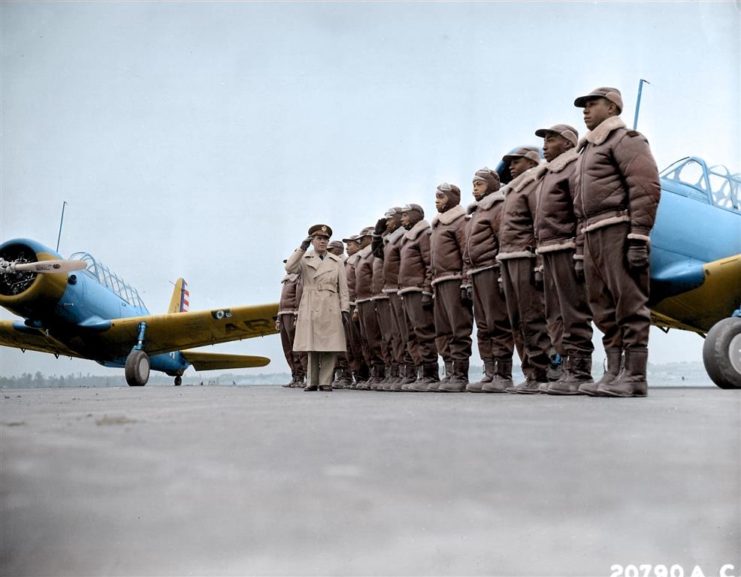
“Maj. James A. Ellison returns the salute of Mac Ross as he passes down the line during review of the first class of Tuskegee cadets.”
Photographed by US Air Force, Tuskegee, Alabama, USA probably 1941. Colourised by Mads Madsen
“Retrographic’s motivation is reflected in this experience of the community of colourisers I have worked with: respect for the original black and white photography and photographers, sympathy for the subjects where-ever possible, and dedicated research into the authentic colors the photographers themselves would have witnessed while capturing the moment. It is very much an effort by a group of people (many of whom have been brought together by the master of colorisation Doug Banks via facebook page Colourising History) who love the photographic media and were happy to take the time out to contribute and support the project,” he said.
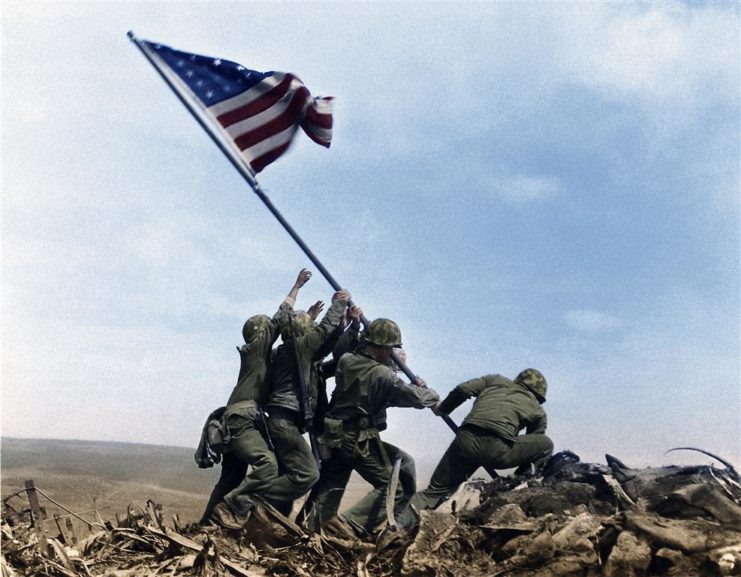
“In the case of Retrographic we focused initially on well-known iconic images that speak directly to many people, by virtue of already being known, and presenting these images in a fresh way through color. Through my work over a period of years I was already acquainted with much of the work of the contributing colourisers, so I was able to curate lesser known, but exciting images, about important historical themes that continue to affect us today. These include wars of the 20th Century, race and Civil Rights in America, the role of women, the disabled, fascism, communism and democracy, and the rise of popular culture.
For example, we begin Retrographic with an incredible image of a 99-year-old veteran from the American Revolutionary War taken in the mid-19th Century – a man who helped make American democracy, and our final image is of President Nixon, a man who “unmade” this proud legacy through his actions during the Watergate Scandal.
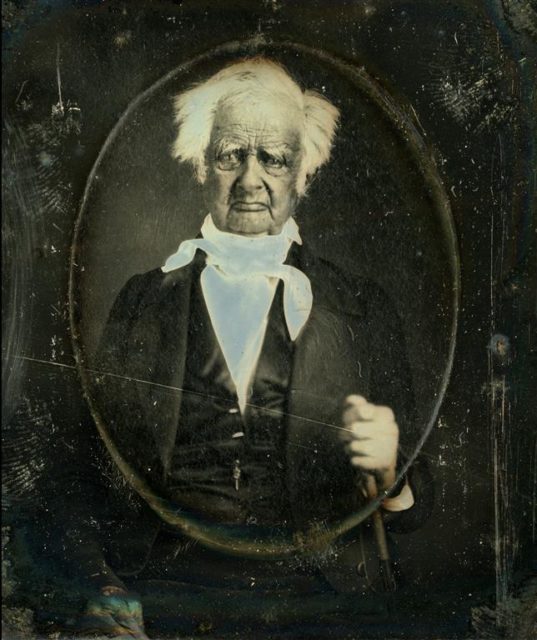
“Throughout history, uniforms, badges, ensigns, and signals have used color to communicate information to combatants in the battlefield. This tradition of using color to signal was most famously used in medieval heraldry but extends back to the ancient armies of Rome and Greece. In modern warfare of the photographic period, this became highly sophisticated and this level of critic communication is missing from images taken in black and white.
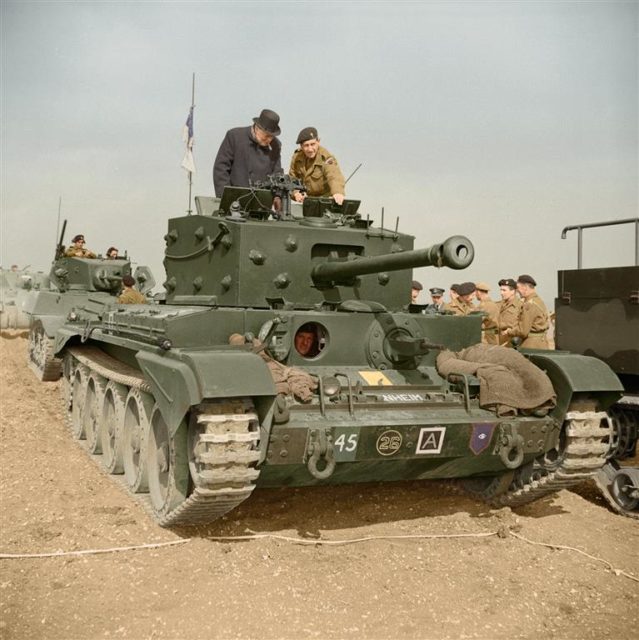
“If we look at the image of Churchill inspecting a Cromwell tank prior to D-Day, The markings on the front of the tank tell us a great deal about how this war machine was to be used as part of its mission to cross the sea to France, land successfully, and to begin the perilous task of pushing Nazi forces back to Germany. On the left, the number 45 painted in white on a green square tells us this machine belongs to an armored reconnaissance regiment, used for scouting, and tracking enemy movements. The number 26 surrounded by a circle means the tank is “bridge class” and therefore suitable to cross the many bridges that were in its path from France, to Belgium and Holland (those with a lower number were not permitted to use bridges). The white square means the vehicle belonged to the 2nd Squadron and the “A” inside the square informs his colleagues that this is the squadron leader’s tank. On the far right, the white, “ever open eye”, within the purple badge is the insignia of the Guards Armoured Division.
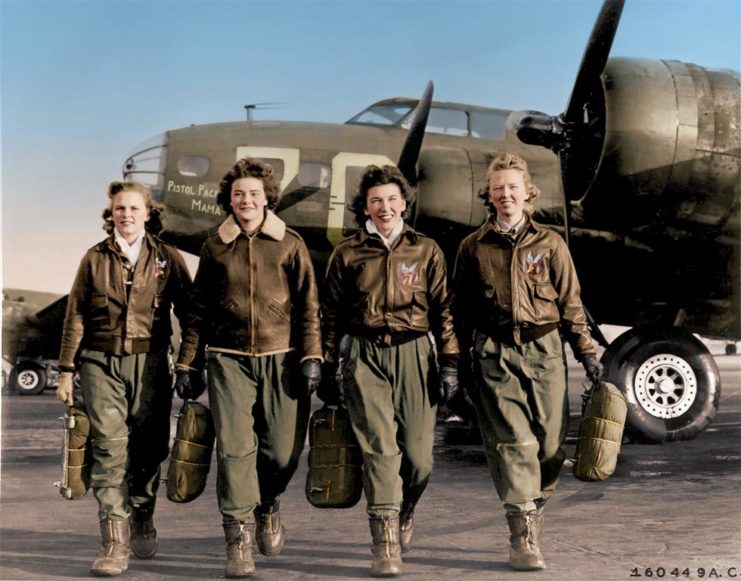
Mr. Carroll explained the hours of research to go into preparing an image to be colourized and the different approaches various colourizers take. The traditional method for reaching authenticity is that which has been honed by generations of researchers: looking at the primary historical sources for evidence.
“A contrasting, high-tech method, developed by Ireland-based contributor Matt Loughrey, has been to produce a computer algorithmic code which “learns” the correct colors based on the tonality of the black and white original, and which has been rigorously tested against known image colors for reliability,” he explained.
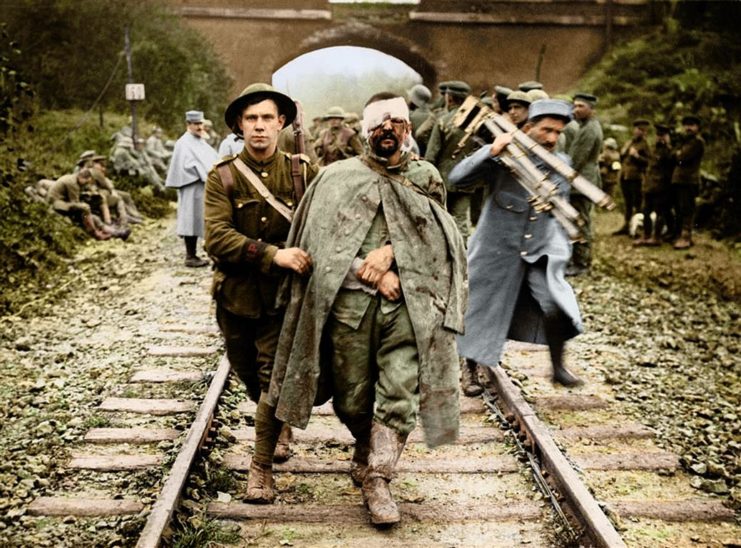
Photographed by unknown probably on November 13th, 1916, image courtesy of the National Library of Scotland. Colourised by Tom Marshall
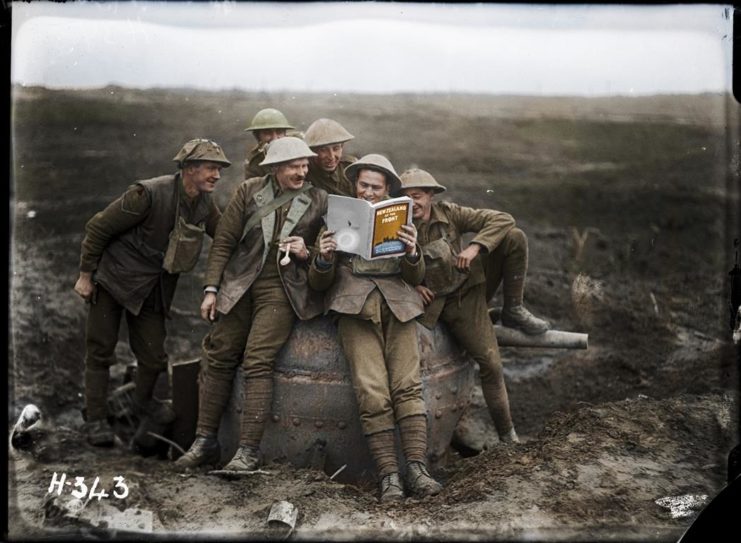
These pictures form part of a new book on iconic colourized photographs called Retrographic by author Michael D. Carroll. The book is currently available to buy on Amazon for £16.85.
For more information visit Amazon or Facebook
Image credit: Retrographic / Carpet Bombing Culture
ABOUT THE AUTHOR
Michael D. Carroll is the director of Britain’s most exciting press agency, Media Drum World. From the agency’s newsroom in Birmingham, England, he manages a team of staff journalists specializing in the curation of offbeat digital content, particularly historical photography, for national newspapers and international media outlets. He lives with his wife and two daughters.
https://www.youtube.com/watch?v=dvvZZVPrkdY
